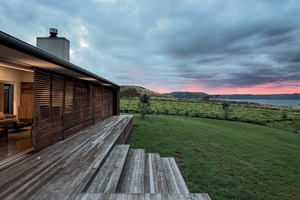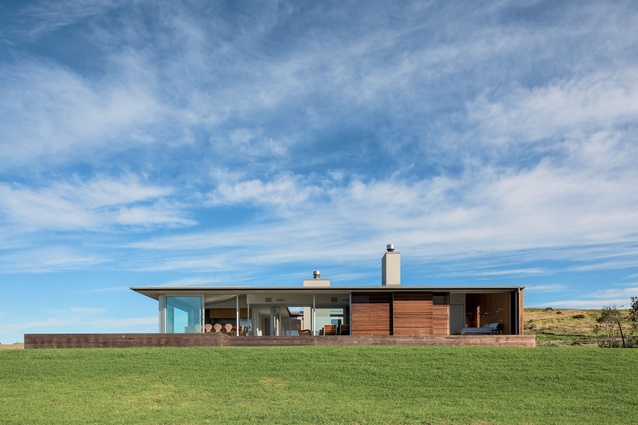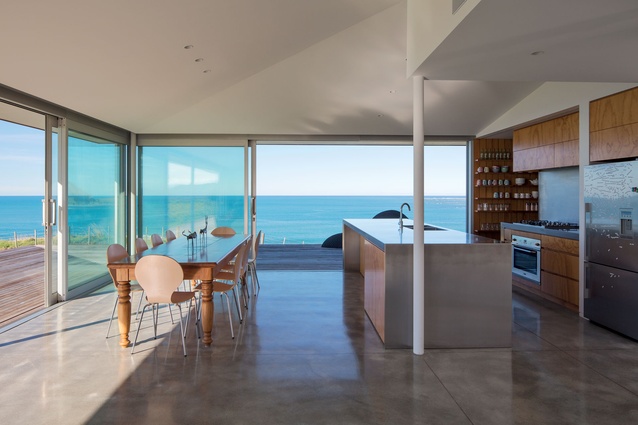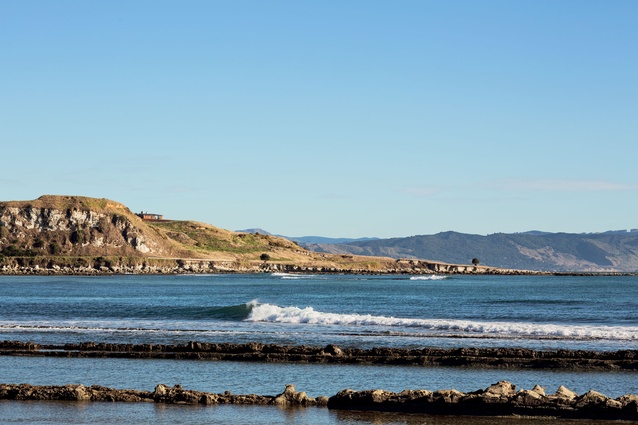Houses revisited: Mahia Peninsula house
A place to stand – a fallen tree replanted on a remote headland. First published in 2013.
High and in splendid isolation on the headland of Mahia Peninsula in northern Hawke’s Bay, the MacIntyre Holiday house, designed by Julian Guthrie of Auckland-based Godward Guthrie Architects (now Godward Designspace), blends into the bare hill line while taking in sublime ocean vistas to the north and east. It is a house that works with nature and place to create a very special living environment.
Built as a holiday home for a family with four young children, and friends, the house takes advantage of its ocean views while also providing shelter from the strong sea winds and storms the site is prone to. As a holiday home it needed to be secure and low maintenance when unoccupied for long periods.

An unusual condition of the brief was that the architects incorporate timber from a large fallen kahikatea white pine on the client’s Wellington property. This brings a uniquely individual touch to the project, firmly tying it to the personal history of the clients as a tūrangawaewae — a place to stand — as well as a getaway destination and tranquil sanctuary.
The architectural concept was to wrap a single level house around a protected central courtyard in Roman or Japanese fashion, but heavily inspired by traditional Māori architecture.
The design reinterprets the traditional pa with a series of timbered screens that can be closed to fortify the house — a gesture to the location and a necessity to protect the building from the extremes of weather.
The internal courtyard doubles as both outdoor living space and a circulation axis for all parts of the house, and provides sun and sheltered openings from multiple orientations throughout the day. The use of sliding doors with slatted sun screens mean that interior volumes feel more like open alcoves off the interior courtyard, giving the house a light and airy feeling with clean lines and uncluttered volumes.

The house’s exterior walls are clad in a mixture of plastered insulated masonry and clear oiled cedar sarking. The hipped low pitched roof echoes the corner headland aspect and the New Zealand vernacular. The generously deep eaves of the verandah give additional shelter to the exposed face.
Fallen kahikatea was milled to provide the interior wall sarking to mirror and counterpoint the external cedar linings. The flooring throughout the house consists of polished slab set level to hardwood decking and concrete pavers. This provides a natural thermal store to heat the house, allows for an unimpeded flow between the interior volumes and brings together a beach house palette of whites, greys, silvers, and bleached-out timbers blending into the raw, severe beauty of the coastal landscape.
A garage outbuilding is loosely anchored back to the main structure with a steel beam, which permits the wall/door to slide open without disrupting the overall aesthetic. An organic relationship between structure and setting has been maintained on the site as well as when viewed from a distance. A home that is a study in casual luxury and aesthetic sensitivity.
Click here to see more Houses Revisited. And sign up to our email newsletters to receive Houses Revisited straight to your inbox.
Note: These are stories from our archives and, since the time of writing, some details may have changed including names, personnel of specific firms, registration status, etc.














